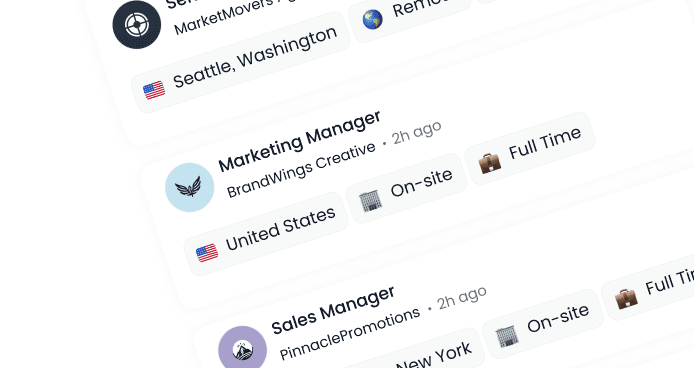How AI Job Boards Make Diversity & Inclusion Hiring Practical
Published:
November 13, 2025
All
AI Recruitment
Recruiting Tips
Employer Branding
Candidate Experience
Workforce Planning
Diversity hiring isn’t just a goal anymore — with AI job boards, it’s finally becoming a practical reality.
Key Takeaways
AI job boards make diversity hiring actionable by automating anonymization, skill-based matching, and structured evaluation at scale.
Bias-free tools don’t just “signal” inclusion—they expand access to equitable opportunities while keeping decisions consistent and auditable.
A practical rollout pairs technology with clear rubrics, reviewer training, and lightweight compliance checks.
Diversity and inclusion (D&I) hiring is a hot topic in today’s recruitment landscape. Organizations that focus on skills-first and non-biased approaches see tangible benefits: a larger candidate pool, stronger employer branding, and better hiring outcomes. Efficiency, cost, and scalability concerns are increasingly addressed through AI-first platforms.
To prove this isn’t just anecdotal, a LinkedIn Economic Graph analysis finds that skills-based matching can expand talent pools by a median of 6.1x globally. While concerns exist about biased data propagating through AI, newer, smarter algorithms can mitigate this—though results still depend on the AI platform being used.
Join us as we explore the practical challenges of D&I hiring and how AI can make it more achievable. We’ll outline what bias-free tools look like, share examples, and provide actionable steps to prevent bias from creeping in.
Why “Practical” Matters for D&I
Many teams agree on inclusion in principle but struggle in practice: resumes reveal pedigree before potential, interviews vary widely, and busy teams default to old heuristics. Advanced AI-powered job boards turn aspiration into repeatable workflows that are standardized, evidence-driven, and easier to defend.
Reducing the Noise: AI Platform Capabilities That Move the Needle
While practicality is a concern, the next question is: what can AI do to filter out unnecessary noise and help teams adopt a fair, skills-first approach?
Anonymized Applications Reduce First-Look Bias
Removing names, headshots, schools, and addresses allows reviewers to focus on capabilities. AI job boards can auto-redact sensitive fields and present unified, skills-forward profiles, minimizing unconscious bias—especially in the earliest, high-volume stages.
Skill-Based Matching Expands Who Gets Seen
Rather than filtering by title or degree, AI maps candidate skills to role requirements and surfaces strong adjacent fits—career-switchers, nontraditional grads, returners. This widens the candidate slate without lowering the bar, increasing equitable opportunities while preserving quality signals such as project evidence or assessments.
Structured Evaluation Makes Decisions Consistent
Bias often creeps in when criteria shift mid-process. AI job boards can enforce transparent rubrics: consistent competencies, scoring scales, and examples for every candidate. Clear instructions and structured processes for interviewers (e.g., what “3/5” looks like, sample follow-ups) reduce idiosyncratic judgments and provide clearer rationales—hallmarks of fair recruitment.
Built-In Auditability Supports Ongoing Fairness
Modern platforms log decision trails (scores, comments, stage outcomes), enabling simple fairness checks by stage and role. Teams can export summaries and monitor impact ratios without manual work. Some regions, such as New York State, have local bias-audit requirements, and platforms with audit-ready data simplify compliance.
The Process Behind Bias-Free Tools in Practice
Redaction & Standardization: Automatic removal of identity signals in early stages; structured profiles highlighting verified skills, portfolios, and work samples.
Assessment Alignment: Role-specific tasks scored with shared rubrics; reviewer guidance ensures ratings remain anchored.
People-in-the-Loop: AI proposes, humans decide—reviewers see the same information in the same order, with rubric hints to maintain structured evaluation.
Feedback Loops: Outcome dashboards flag drift, allowing teams to update rubrics or tweak screening logic.
A Week-Wise Realistic Implementation Example
Week 0–2: Define the Target
Select 2–3 roles with historically narrow pipelines.
Write competency-based job requirements (skills, behaviors, evidence).
Draft a 5-point behavior-anchored rubric per competency.
Week 2–4: Configure the AI Job Board
Enable anonymized screening for early stages.
Map required and adjacent skills; set thresholds for shortlists.
Add one practical work sample or scenario per role.
Week 4–6: Calibrate and Train
Run a small pilot: 2 hiring managers + 2 reviewers per role.
Score 20–30 profiles together to align rubric interpretations.
Compare stage-by-stage outcomes; refine criteria.
Week 6–8: Roll Out + Monitor
Track pass-through rates by protected groups (where legally permissible).
Monitor pattern drift (e.g., one interview question pulling scores down).
Recalibrate frequently—bi-monthly or quarterly; keep rubrics and examples version-controlled for accountability.
How This Helps Your Team Tomorrow
With anonymization, skills-first shortlisting, and structured evaluation running by default, recruiters spend less time wrestling with noise and more time engaging qualified talent. This is the essence of “How AI Job Boards Make Diversity & Inclusion Hiring Practical”—turning values into measurable outcomes.
If you’re ready to operationalize bias-free recruitment—from anonymized screening to transparent rubrics—consider AI platforms built for this purpose. DigitalHire offers an AI job board, skills-first matching, and structured video-interview workflows designed to support fair and inclusive hiring.
FAQs
Do anonymized applications conflict with role-specific requirements?
No. Identity indicators can be redacted while still showing verified skills, portfolios, and assessment outputs aligned with the role.
Will skills-based matching lower our hiring bar?
Not if competencies are clearly defined and paired with role-relevant assessments and rubrics. Evidence-focused matching often raises the quality of hires.
How many criteria are ideal?
Aim for 4–6 core competencies per role, with behavior-anchored examples for scores 1–5. Too many criteria dilute reviewer focus.
What should we monitor post-launch?
Track pass-through rates by stage, inter-rater agreement, score distributions, and time-to-hire. Review quarterly and update standardized rules as needed.
Do we need a formal bias audit?
Requirements vary by jurisdiction. For example, NYC AEDTs require an independent bias audit with a public summary and candidate notice. Consult your compliance team or experts.
FREE JOB POST
Looking to fill a position quickly? Post your job for free and reach top talent today!




